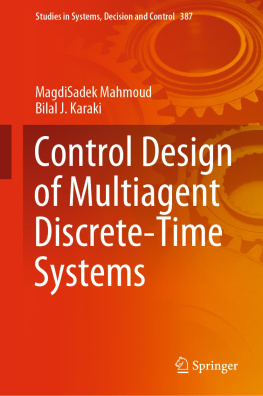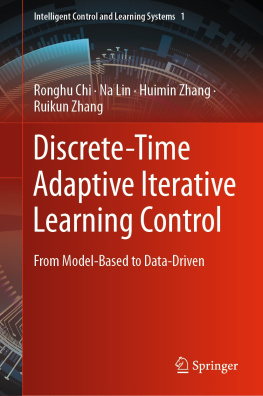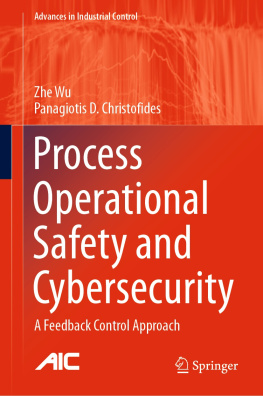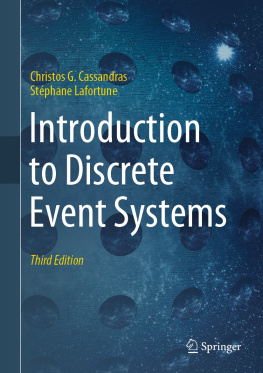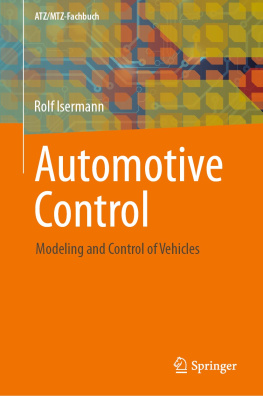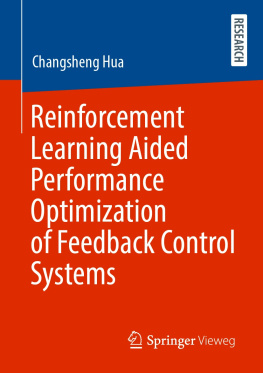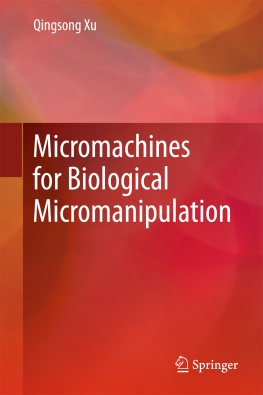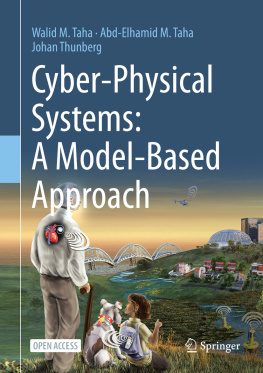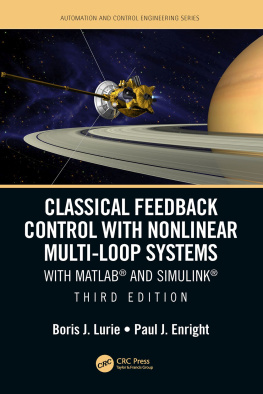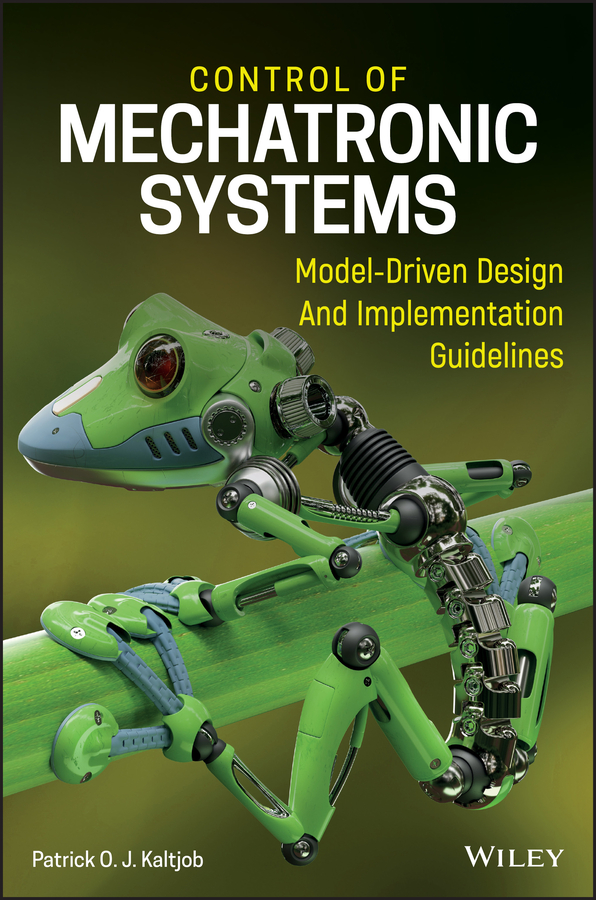
Table of Contents
List of Tables
- Chapter 1
- Chapter 2
- Chapter 3
- Chapter 4
- Chapter 5
- Chapter 6
- Chapter 7
- Chapter 8
- Appendix A
- Appendix B
- Appendix C
List of Illustrations
- Chapter 1
- Chapter 2
- Chapter 3
- Chapter 4
- Chapter 5
- Chapter 6
- Chapter 7
- Chapter 8
- Appendix E
Guide
Pages
Vice President and Editorial Director: Amanda L. Miller
Acquisitions Editors: Eric Willner and Anne Hunt
Editorial Assistant: Anne Hunt
Editorial Supervision and Production: Rosie Hayden
Production Manager: Amudhapriya Sivamurthy
Cover Manager: Hannah Lee
Marketing Manager: Sarah Brett
Control of Mechatronic Systems
Model-Driven Design and Implementation Guidelines
Patrick O.J. Kaltjob
Ecole Nationale Superieure Polytechnique
Yaounde, Cameroun

This edition first published 2019
2019 John Wiley & Sons Ltd
All rights reserved. No part of this publication may be reproduced, stored in a retrieval system, or transmitted, in any form or by any means, electronic, mechanical, photocopying, recording or otherwise, except as permitted by law. Advice on how to obtain permission to reuse material from this titleis available at http://www.wiley.com/go/permissions.
The right of Patrick O J Kaltjob to be identified as the author of this work has beenasserted in accordance with law.
Registered Office(s)
John Wiley & Sons, Inc., 111 River Street, Hoboken, NJ 07030, USA
John Wiley & Sons Ltd, The Atrium, Southern Gate, Chichester, West Sussex, PO19 8SQ, UK
Editorial Office
The Atrium, Southern Gate, Chichester, West Sussex, PO19 8SQ, UK
For details of our global editorial offices, customer services, and more information about Wiley products visit us at www.wiley.com.
Wiley also publishes its books in a variety of electronic formats and by print-on-demand. Some content that appears in standard print versions of this book may not be available in other formats.
Limit of Liability/Disclaimer of Warranty
MATLAB is a trademark of The MathWorks, Inc. and is used with permission. The MathWorks does not warrant the accuracy of the text or exercises in this book. This works use or discussion of MATLAB software or related products does not constitute endorsement or sponsorship by The MathWorks of a particular pedagogical approach or particular use of the MATLAB software. While the publisher and authors have used their best efforts in preparing this work, they make no representations or warranties with respect to the accuracy or completeness of the contents of this work and specifically disclaim all warranties, including without limitation any implied warranties of merchantability or fitness for a particular purpose. No warranty may be created or extended by sales representatives, written sales materials or promotional statements for this work. The fact that an organization, website, or product is referred to in this work as a citation and/or potential source of further information does not mean that the publisher and authors endorse the information or services the organization, website, or product may provide or recommendations it may make. This work is sold with the understanding that the publisher is not engaged in rendering professional services. The advice and strategies contained herein may not be suitable for your situation. You should consult with a specialist where appropriate. Further, readers should be aware that websites listed in this work may have changed or disappeared between when this work was written and when it is read. Neither the publisher nor authors shall be liable for any loss of profit or any other commercial damages, including but not limited to special, incidental, consequential, or other damages.
Library of Congress Cataloging-in-Publication Data
Names: Kaltjob, Patrick O. J., author.
Title: Control of mechatronic systems : model-driven design and implementation guidelines / Patrick O. J. Kaltjob.
Description: Hoboken, NJ : John Wiley & Sons, 2020. | Includes bibliographical references and index.
Identifiers: LCCN 2018051541 (print) | LCCN 2019022413 (ebook) | ISBN 9781119505808 (hardcover)
Subjects: LCSH: Mechatronics. | Manufacturing processes.
Classification: LCC TJ163.12 .K34 2019 (print) | LCC TJ163.12 (ebook) | DDC 621dc23
LC record available at https://lccn.loc.gov/2018051541
LC ebook record available at https://lccn.loc.gov/2019022413
Cover design by Wiley
Cover image: Menno van Dijk/iStock.com
To the Holy Trinity and Saint Mary
Special thanks to Stella, Emmanuelle, Naomi, Luk and David
To Aaron, Thomas, Olive and Anne
Preface
The control of mechatronic systems and electrical-driven processes aims to provide tools to ensure their operating performance in terms of productivity, optimization, reliability, safety, continuous operations and even stability. This is usually achieved through hybrid control paradigms using digital or analog tools. Nowadays, digital tools are widely considered to implement control systems as they offer numerous advantages including their ability: (i) to ease the control system implementation; (ii) to design complex and built-in intelligent information processing combining multiple functions for control, fault detection and diagnostic, monitoring and planning decisions; (iii) to integrate logic and continuous control algorithms as well as supervision programs into hybrid control strategies; (iv) to enhance the synchronization of input and output process operations; (v) to coordinate control actions among geographically distributed systems and processes and (iv) to achieve reliable and optimal operating conditions.
The digital control system architecture usually consists of the integration of the following functional units: a data processing and computing unit, an electrical-driven actuating unit, a measuring and detecting unit, a data acquisition ( DAQ ) and transmitting unit and a signal conditioning unit. The data processing and computing unit can be implemented through devices such as microcontroller ( C ), programmable logic controller ( PLC ) with a control function, digital signal processing ( DSP )a and a field-programmable gate array ( FPGA ).
The design of efficient control systems requires the mathematical modeling of mechatronic systems and process dynamics. This can be achieved in accordance with the operating characteristics (discrete and continuous) and objectives as well as technological constraints of the related instrumentation (signal conversion, transmission, conditioning, measurement, actuation etc.). However, in most of the current engineering literature on the design of digital control systems, the mathematical foundation of discrete time and discrete event systems is usually presented separately from the technological constraints of control instrumentation. For example, the operating time delay models or signal to noise ratio from digital device interfaces are not usually considered. Hence, the theoretical control algorithms proposed have limited practical applicability.
Challenges in the development of a practical design approach for the control of mechatronic systems and electrical-driven processes are: (i) to size and select control instrumentation in accordance with controlled system design objectives; (ii) to develop accordingly the mathematical discrete hybrid model capturing their continuous and discrete event behavioristic characteristics and (iii) to integrate the control systems with respect to technological constraints and operational characterization (discrete and continuous) (e.g. time delays, signal to noise ratios etc.).
Next page

